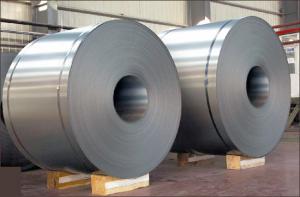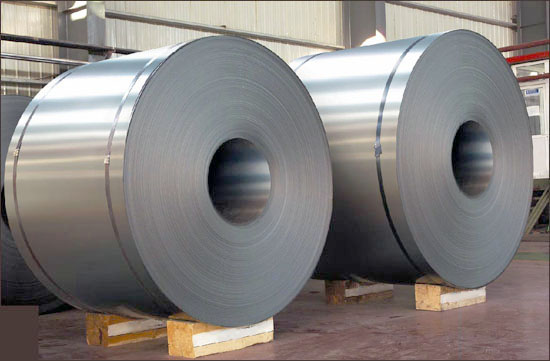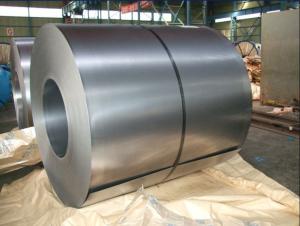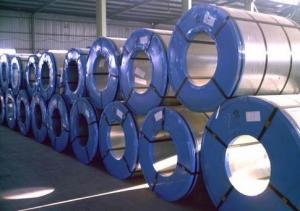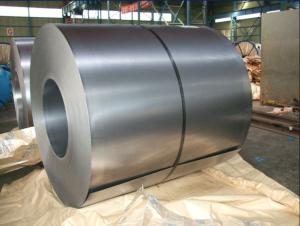Bright Anneal Cold Rolled Steel-EN10130 DC01-2
- Loading Port:
- Tianjin
- Payment Terms:
- TT OR LC
- Min Order Qty:
- -
- Supply Capability:
- 4000吨 m.t./month
OKorder Service Pledge
OKorder Financial Service
You Might Also Like
SPECIFICATION
1) Capacity: about10,000 ton per month for steel strip/tape product
2) Thickness: from 0.20mm to 3.5mm, all available.
3) Width: from 15mm to 600mm, all available.
4) Grade: Q195, SGCC, DX51D
5) Coil weight: from 50kg to 7000kg, all available.
6) Coil ID: 100mm - 508mm
7) Coil OD:500mm-1300mm
9) Tensile strength: 28.1-49.2kgf/mm2
10) Zinc coating weight: Min. 60g/m2, double side
11) Spangle: regular spangle, minimized spangle, zero spangle
12) Surface treatment: chemical passivating treatment, oils,passivating oils
13) Min trial order 5ton each thickness, 1 x 20' per delivery
14) Components: C%≤ 0.07, Si%≤0.03, Mn% ≤ 0.50, P% ≤ 0.025,S% ≤ 0.025, Alt% ≥ 0.02
It is the basedmaterial for galvanized steel coil and pre-painted galvanized steel coil. It iswidely used in light industry for making tank, furniture, pipe, refrigerators,washers, freezer plate, air conditioner, micro-wave oven, water heater,soot-such machine, electric rice cooker, electric roaster oven, dryers andautomobile etc. In the other application industries, it’s mainly used forenameling, office furniture, burglarproof door, electronic element, fastenerbattery, hardware, automotive fitting etc.
Eye to sky package: Anti-damp paper inside fullwrapped with plastic film, iron sheet outside on wooden pallet in 20 feetcontainer with 25mt.
- Q: What are the different types of steel coil coatings for corrosion resistance?
- There are several types of steel coil coatings available for corrosion resistance, including galvanized coatings, galvannealed coatings, and organic coatings.
- Q: I have a belly button piercing and the metal is stainless steel.. I was wondering does it develop rust whenever you go shower and clean it? Can I still swim in the summer with it or do I have to take it out? What happens if I swim in the pool with it?
- Theoretically stainless steel is supposed to be what it's name says it is - stainless. However there are different grades of stainless so yours might dis-colour if it's low grade. Think of all the stainless steel cutlery you use to eat with - if you keep it clean it doesn't go rusty ; it can if you don't look after it.
- Q: I asked a question last week about stainless steel and got some great answers. I combed all over the internet to try to figure this one out but could not find anything. What resists bending better: chrome vanadium steel (i.e. a steel commonly used to make tools) or stainless steel 304. My guess would be the chrome vanadium alloy but thats just a guess. Which on resist's bending better and by how much (#'s please :-)). Also, if anyone knows if chrome vanadium steel is cheaper than stainless steel 304 that would be awesome? I can't find a price per pound on chrome vanadium steel anywhere! Please help. Thanks in advance-Josh
- Type 304 stainless steel can be tempered to give tensile strength up to about 125,000 psi. There are many chrome vanadium alloys, and tempers, but they are generally very hard steels used for machine tools which are used to cut other steels. They generally are much stronger, and can be hardened up to tensile strengths of 250,000 psi and beyond. (Bending strength is proportional to tensile strength, but Cr-V steels are not usually used for beams or other structure members.) Cr-V steels are specialty alloys and will probably be a good bit more expensive per pound than common stainless alloys. For any steel, price depends on the form you are buying, i.e. plate, bar, or other shape, as well as the alloy and temper specified, and the quantity. You need to get prices from a supplier. You can find some online catalogs, but you usually have to call the vendor for price info.
- Q: What are the dimensions of a typical steel coil?
- The dimensions of a typical steel coil can vary depending on its intended use and manufacturing specifications. However, common dimensions for a steel coil typically range from 0.15 to 3.5 millimeters in thickness, and 600 to 2,000 millimeters in width. The inner diameter of the coil can be around 508 to 610 millimeters, and the maximum outer diameter can be up to 2,000 millimeters.
- Q: What is the best butcher's steel around $20? I'm looking for a good tool to straight out some kitchen knives. thanks
- It's okorder /... For best results you'd need a smooth steel, which is outside of your budget, but for all practical purposes fine grit ceramic sticks work the same and they also work for super hard Japanese kitchen knives, since the butcher's steel is softer than the steel in those knives. Get something over 1000 grit and use the same motion as with the steel. Just very light pressure and try to match the edge.
- Q: This EN10025 S355JR is a European code for steel, of which the properties can be found here.
- *EN 10 025 S355JR/JO is comes under structural steel catagories. Equivalent standard is-ASTM A 572 Gr 50. -Above areHigher strength micro-alloyed steel. -The above-mentioned structural steel grades may be welded using any of the standard metal arc and resistance welding processes, usually without any special precautions.
- Q: Steel coil from vertical to horizontal, what sling needs?
- The sling has little effect, but it is easy to damage the surface of rolled steel.
- Q: I found the cold steel kukri machete online and I am very impressed and am thinking of ordering it. A friend of mine said that the cold steel kukri machete is nothing compared to the KaBar Kukri Machete. I was wondering if other people who own these machetes could tell me the good and the bad of each machete. Such as what they have been able to cut. If they break easily and such. Thanks in advance.
- cold steel will be thin but made of a carbon steel good enough but not perfect flexable and as for cutting power that varies piece to piece as not all places sell sharpened models so be prepared to hand sharpen in any case you would need to hand sharpen sooner or later so a sharpening stone is a good investment no matter what machete you buycold steel is fine for most peoples need for them unless you see a better price go with either one
- Q: Can steel coils be custom-made to specific requirements?
- Indeed, it is possible to manufacture steel coils according to specific requirements. Steel producers possess the necessary capabilities to manufacture steel coils with diverse dimensions, thicknesses, and specifications in order to meet the specific demands of their customers. These coils can be tailored in terms of width, length, weight, and even surface finish to accommodate specific applications and industries. Furthermore, customization options may include variations in steel grade, coating type, and mechanical properties to guarantee the desired performance and functionality. The capacity to customize steel coils to meet specific requirements enables their optimal utilization in a variety of sectors, including automotive, construction, appliances, and manufacturing, among others.
- Q: When maintaining a japanese knife: Is a honing steel still necessary if I have a fine 3000/8000 grit whetstone?which do you prefer?
- A steel is to clean off an edge and remove any bends on the bevel, it is not directly for sharpening as it removes no material from the knife (or should not). A whetstone, however fine, does remove material. A steel to maintain an edge, a stone to restore an edge. They are different items for different purposes.
Send your message to us
Bright Anneal Cold Rolled Steel-EN10130 DC01-2
- Loading Port:
- Tianjin
- Payment Terms:
- TT OR LC
- Min Order Qty:
- -
- Supply Capability:
- 4000吨 m.t./month
OKorder Service Pledge
OKorder Financial Service
Similar products
Hot products
Hot Searches
Related keywords
